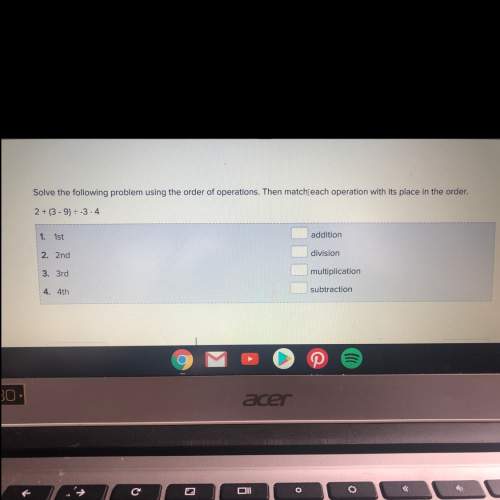Which equation represents the line that passes through (–6, 7) and (–3, 6)?
y = –x + 9
...

Mathematics, 03.07.2019 20:20 ggggg453
Which equation represents the line that passes through (–6, 7) and (–3, 6)?
y = –x + 9
y = –x + 5
y = –3x – 11y
y = –3x + 25

Answers: 1


Other questions on the subject: Mathematics

Mathematics, 21.06.2019 16:30, victoria8281
Answer the following for 896.31 cm= km 100cm = 1m 1000m = 1km a) 0.0089631 b) 0.0089631 c) 8.9631 d) 89.631
Answers: 1

Mathematics, 21.06.2019 21:00, lunnar2003
Graph the system of inequalities presented here on your own paper, then use your graph to answer the following questions: y < 4x − 8 y is greater than or equal to negative 5 over 2 times x plus 5 part a: describe the graph of the system, including shading and the types of lines graphed. provide a description of the solution area. (6 points) part b: is the point (5, −8) included in the solution area for the system? justify your answer mathematically. (4 points)
Answers: 3


Mathematics, 22.06.2019 02:30, lauren21bunch
The distribution of a sample of the outside diameters of pvc pipes approximates a symmetrical, bell-shaped distribution. the arithmetic mean is 14.0 inches, and the standard deviation is 0.1 inches. about 68% of the outside diameters lie between what two amounts?
Answers: 1
You know the right answer?
Questions in other subjects:


Geography, 25.07.2019 01:10






Mathematics, 25.07.2019 01:10





